 Original Key family combined plot in Mount Olivet's area H/Lot 436 & 439 Original Key family combined plot in Mount Olivet's area H/Lot 436 & 439 "What's in a name?" an age-old question usually credited to William Shakespeare for introducing the proverb to us through Romeo and Juliet. A person's name is said to be the greatest connection to their own identity and individuality. Interestingly, one can walk for hours through a cemetery like Mount Olivet and read hundreds of different names on gravestones and monuments. Some may be familiar and recognizable, perhaps friends, acquaintances, or relatives. However, I would definitively bet that the vast majority of tombstones gazed upon would represent names and people completely foreign to you and, hence, desirous of intrigue and curiosity. Well that's the sole reason I have been doing this blog for almost four years now! Even I have little to no idea of who these people are, what they did, how they died or what they were like. And that's why the hours of research I pour into these stories is so fulfilling, I actually come away not only learning about an individual (usually forgotten over time), but in bringing their memory back to life, I usually learn local, state, national and world history some how. These lives are reflections of the time periods in which they lived, allowing me to see the world through their lens, not manipulated by how we look back today and see/judge things. The above mentioned statement I made about names (A person's name is said to be the greatest connection to their own identity and individuality)really rang true to me last week as I encountered two gentlemen I knew relatively nothing about. However one had a name in which I associated a greater quality of life experience, while the other I thought would be hum-drum and ordinary. In fact, both men's last names also double as adjectives—talk about descriptive irony. The first man was Francis Scott Key, Jr. "Key" when used as an adjective is defined: "of paramount or crucial importance" (ie: The quarterback made a key throw in the final touchdown drive to win the game.") The other gentleman in question is Simon Fraser Blunt. "Blunt" as an adjective is defined as "having a worn-down edge or point; not sharp" (ie: The blunt knife was virtually useless as it couldn't cut anything.") Blunt also has another meaning when it pertains to a person or remark, and means "uncompromisingly forthright." (She was very blunt with her date, saying that there was no need for him to bother asking her out again." Last week’s story focused on a son of Francis Scott Key, one who had the same name as his father, but certainly the opposite fortune of leaving a lasting legacy. To my surprise, Francis Scott Key, Jr. didn’t do anything of particular note outside being a loving husband and father. Newspapers had scarce mentions of him during his lifetime, and he is non-existent in any history book. FSK, Jr.’s proud estate, named “the Elms” in Howard County, is long gone, without a trace. His children really didn't stand out in their own way either. Key, Jr. died in mid-1866 and was first entombed in a graveyard in Baltimore, but would be re-interred a few short months later in Frederick’s Mount Olivet along with his parents and another gentleman (who I am very excited to introduce you too). All four individuals had previously rested within the Howard family vault in Old St. Paul’s Cemetery. Francis Scott Key, Sr. and wife Mary Tayloe Lloyd Key were moved yet again, in 1898, to their present location (within a vault under a fine memorial more befitting the author of “The Star-Spangled Banner,”) by our cemetery's front gate. With this move, the memory and acknowledgement of Francis, Jr. sank further into obscurity as few visitors would travel to the vicinity of his grave and notice his slab of marble. I enjoyed the research challenge nonetheless, and fed my curiosity to learn more about this gentleman and, in the process, more about the immediate family of the guy who wrote our national anthem. I mentioned a fourth individual of the “Key entourage” to be reburied from Baltimore to Mount Olivet back in the year 1866. This was Simon Fraser Blunt, and the exact date of his burial in Mount Olivet’s Area H/lot 439 occurred without fanfare on October 1st, 1866. Mr. Blunt was Francis Scott Key’s son-in-law, having married daughter Ellen Lloyd Key in 1846. Blunt is only about five yards away from brother-in-law FSK, Jr., but a comparison of life stories is “night and day,” as they say. I was astounded with what I found out about Simon Fraser Blunt, and am prepared to show you that although short, he had an adventurous 35 years here on Earth. To be perfectly "blunt," our subject's life was uncompromisingly forthright, and the furthest thing from dull. Simon Fraser Blunt enjoyed a distinguished career in the US Navy, one that would encompass the majority of his life. He was a member of the Wilkes Expedition which explored and surveyed the Pacific Ocean, a cartographer of San Francisco Bay and served as captain of the SS Winfield Scott when it shipwrecked off Anacapa Island in 1853. Two geographic features, Blunt Cove and Point Blunt are thought to be named for him. Yet, there are few, if any, individuals today who have actually ever heard the name of 1st Lt. Simon F. Blunt. In particular, two chapters of his life are particularly amazing and worth telling as these would bookend his Naval career front and back. Blunt Force Simon Fraser Blunt was born August 1st, 1818 in Southampton County, Virginia. His father, Dr. Samuel Blunt, owned a fine plantation named Belmont, located a few miles northeast of the small crossroads town of present-day Capron. According to the 1831 slave census, Dr. Blunt’s father owned nearly 36 slaves. This fact would play out during “the dawn’s early light” on the morning of August 23rd, 1831. Belmont would take part in the bloodiest and best-known slave revolt in American history. Nat Turner (1800-1831), an enslaved black preacher was living at the home of Southampton County craftsman Joseph Travis in the summer of 1831. He had been recently acquired by Mr. Travis, having been bought and sold by a few different slave-owners throughout his life. Having believed he was divinely selected to lead his people out of bondage, Turner took this as a sign in the form of an eclipse of the Sun caused Turner to believe that the hour to strike was near. His plan was to capture the armory at the county seat of Jerusalem, and, having gathered many recruits, to press on to the Dismal Swamp, 30 miles to the east, where capture would be difficult. 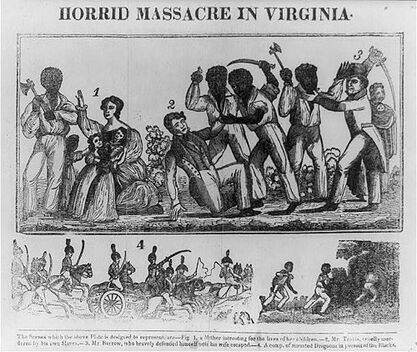 On the night of August 21st, together with seven fellow slaves in whom he had put his trust, he launched a campaign of total annihilation, murdering Travis and his family in their sleep and then setting forth on his bloody march toward Jerusalem. In two days and nights about 60 white people were ruthlessly slain. Doomed from the start, Turner’s insurrection was handicapped by lack of discipline among his followers and by the fact that only 80 Blacks rallied to his cause. Just before dawn on August 23rd, Turner and about 20 of his followers had covered a distance of about 15 miles and arrived at Belmont, home of our subject, Simon Fraser Blunt, then having just turned 13 years of age a few weeks prior. Forewarned of the dangers ahead, Dr. Samuel Blunt insisted that his slaves remain and defend the plantation and his family, or join the insurgents. All stayed and successfully defended the home and its occupants. Tradition states that young Simon Blunt fired the first shot at the insurgents, either from the front porch or an upper window as there are two account variations. Belmont would serve as Nat Turner’s “Waterloo” of sorts, and the site of the next-to-last skirmish of the rebellion. Many of his followers had perished upon reaching the Blunt plantation and the remainder were captured and executed upon arrival. Turner, himself, escaped and would be the focus of a multi-month manhunt, before being captured on October 30th, 1831. He was convicted and hanged twelve days later on November 11th, 1831. As an aside, I will share that the Nat Turner rebellion prompted the Virginia General Assembly to spend much of its December 1831 session debating the possible abolition of slavery, something state governor John Floyd had hoped to accomplish. Contrary to Floyd’s wishes, the legislature enacted more stringent slave laws and attempted to suppress abolitionist writings. Turner’s short, but violent revolt, so alarmed the South that a much stricter regimen was soon instituted against slaves and free blacks alike, leading to further hardening of attitudes between the North and South. As Nat Turner had made a name for himself, but lost his life for it, our subject Simon F. Blunt would gain newfound fame and be set on his career path because of Turner’s ill-fated insurrection plot. The plucky teen would be rewarded for his heroism and bravery in battle and summoned to the White House to meet President Andrew Jackson. The president bestowed on the lad immediate commission in the US Navy. His enlistment date states September 7th, 1831. In the Navy What a series of events for 13-year-old Simon F. Blunt—one day he is living peacefully on his father’s plantation, and the next in a fight for his life against Nat Turner, and now he finds himself in the confines of the US Navy. The rebellion attempt on Belmont changed his life incredibly, leading him on a path of world travel on the high seas for the next 23 years. Thankfully (for me), his career in military service is fairly-well documented, but not until 1837, save for one mention in a Philadelphia paper in 1832 mentioning him serving in the Caribbean. I imagine he just "learned the ropes" and trained as a Midshipman on the high seas for those first five to six years in service.  Alexandria (VA) Gazette (Aug 23, 1837) Alexandria (VA) Gazette (Aug 23, 1837) In 1838, Blunt was assigned to the USS Porpoise, under the command of (Washington County native) Captain Cadwalader Ringgold (1811-1867) and passed midshipman on June 23rd before the ship joined the Wilkes Expedition in early August. A passed midshipman, sometimes called as "midshipman, passed", is a term used historically in the 19th century to describe a midshipman who had passed the lieutenant's exam and was eligible for promotion to lieutenant as soon as there was a vacancy in that grade. The Wilkes Expedition is also known as the United States Exploring Expedition of 1838–1842 and served as an exploring and surveying expedition of the Pacific Ocean and surrounding lands. Funding for the original expedition was requested by President John Quincy Adams in 1828, however, Congress would not implement funding until eight years later. In May 1836, the oceanic exploration voyage was finally authorized by Congress and created by President Andrew Jackson. The expedition is referred to as the "Wilkes Expedition" in honor of its commanding officer, United States Navy Lieutenant Charles Wilkes. The expedition was of major importance to the growth of science in the United States, in particular the then-young field of oceanography. Lt. Wilkes had a reputation for hydrography, geodesy, and magnetism. Personnel included naturalists, botanists, a mineralogist, a taxidermist, and a philologist. They were carried aboard the sloops-of-war USS Vincennes (780 tons), and USS Peacock (650 tons), the brig USS Porpoise (230 tons), the full-rigged ship Relief, which served as a store-ship, and two schooners, Sea Gull (110 tons) and USS Flying Fish (96 tons), which served as tenders. During the event, armed conflict between Pacific islanders and the expedition was common and dozens of natives were killed in action, as well as a few of the American explorers. In March, 1839, at Orange Bay, Simon Blunt transferred to the USS Vincennes. On January 16th, 1840, the expedition sailed close enough to Antarctica to see the actual continent and it has been said that Blunt Cove is named for him. Going from one temperature extreme to another, the expedition would next visit the Sandwich Islands in the South Pacific. Formerly this group of tropical islands was known to Europeans and Americans as the Sandwich Islands, a name that Captain James Cook chose in honor of the then First Lord of the Admiralty John Montagu, 4th Earl of Sandwich. The contemporary name, dating from the 1840s, is derived from the name of the largest island, Hawaiʻi Island. The islands were first known to Europeans after the expedition of Álvaro de Saavedra Cerón in 1527. Interestingly, they would become known to all US residents, and the world to a greater degree, exactly 101 years after the Wilkes Expedition made their explorations. The famous naval station at Pearl Harbor would be established here in 1899, after the overthrow of the Hawaiian Kingdom and subsequent annexation of the territory in 1893. Our friend, Mr. Blunt, however, would not have the nicest time in paradise. He apparently took sick in April, 1841 in Honolulu, possibly from participating in the trip to the summit of Mauna Loa Volcano. He eventually rallied and made it back home to the US east coast. A few weeks after the expedition had arrived back in New York City, Simon Blunt was promoted to the rank of lieutenant on July 28th, 1842, In 1844, Blunt was assigned to the USS Truxtun which departed Philadelphia in June of that year and would participate in patrolling activities off the coast of Liberia (Africa). In particular, the ship took up station off Tenerife in the Canary Islands to begin duty suppressing the slave trade. This tour lasted 16 months and when Simon returned, the young man attended the newly formed United States Naval Academy in Annapolis, Maryland. 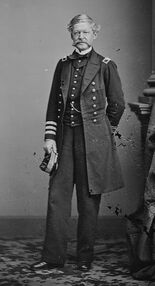 Cadwalader Ringgold Cadwalader Ringgold Lt. Blunt's time spent back in Annapolis, put him on a collision course with his future wife, Miss Ellen Lloyd Key, daughter of Francis Scott Key. The ninth child of the famous lawyer and songwriter was born in Georgetown in 1821 and was said to have been “especially attractive, a fine writer and even better public speaker.” On January 27th, 1846, Simon married Miss Key in Washington DC. Ellen’s famous father was not in attendance as he had died three years previously. Also absent was Ellen’s older brother, Daniel Key, a former midshipman of Annapolis who was killed in a duel in Bladensburg (MD) in June, 1836 by a fellow Navy midshipman named John Sherburne. It’s highly likely that Blunt and Sherburne knew one another, and quite possible that Simon had met Daniel Key in his younger days as a midshipman of similar age. One more unique connection could have helped “match-make” this particular marriage. Blunt’s former commander and colleague, Cadwalader Ringgold, was the half-brother of Virginia Ringgold Key. The former Miss Ringgold had married Ellen’s older brother, John Ross Key (1809-1837) in 1834. Mr. and Mrs. Blunt went on to have three children: Alice Key Blunt (1847–1927); John Yell Mason Blunt (1849–1910); and Mary Lloyd Key Blunt (1850–?). In 1849, Simon F. Blunt was appointed to a Joint Commission of Army and Navy Officers whose purpose was to identify potential sites for lighthouses and defense facilities along the Pacific Coast of the California and Oregon territories. The Joint Commission consisted of three army engineers: Maj. John L. Smith, Maj Cornelius Austin Ogden and 1st Lt. Danville Leadbetter; and three naval officers: Commodore Louis M. Goldsborough, Commodore G.J. Van Brunt, and Blunt, himself. It had assembled in San Francisco by early April 1849. Blunt, either on his own or with the rest of the members of the Joint Commission, presumably joined his former Captain on the USS Porpoise. This was "Commodore" Cadwalader Ringgold who led an expedition on the chartered brig Col. Fremont in an effort to chart the San Francisco Bay region, suddenly important because of the recent discovery of gold in the area—the Gold Rush of '49. Ringgold is reputed to have named Point Blunt on Angel Island in the San Francisco Bay for our friend Simon. Afterwards, Lt. Blunt assisted Commodore Ringgold in the creation of two charts for the Bay area: Chart of the Farallones and entrance to the Bay of San Francisco, California (1850) Chart of the Bay of San Pablo, Straits of Carquinez, and part of the Bay of San Francisco (1850) Blunt also drew a lithograph, View of Benicia from the anchorage east of Seal Island for Ringgold's Chart of Suisun & Vallejo Bays with the confluence of the rivers Sacramento and San Joaquin, California. A colored version of the lithograph was published in 1852.  The USS Massachusetts (built 1845) The USS Massachusetts (built 1845) A summary of the further activities of this group state the following: The Joint Commission may have been joined by members of the land branch of the Pacific division of the United States Coast Survey. The USS Massachusetts was transferred to the Navy in San Francisco on August 1st, 1849, and detailed for the use of the Joint Commission to take up and down the coast, however they could not recruit a crew. They borrowed some crewmen from another ship and Blunt may have made his second trip to Hawaii, where the Massachusetts wintered and hired native crewmen. Upon its return, the Joint Commission made preliminary recommendations to President Millard Fillmore to reserve various islands and coastal regions in and around San Francisco Bay. Then they and the Massachusetts sailed up to Puget Sound. After a cursory examination of the mouth of the Columbia River, the ship and the Joint Commission returned to California in July 1850. After a trip to San Diego, the Joint Commission made its final recommendation on November 30th, 1850. If Blunt went with the Joint Commission to Hawaii, immediately upon his return he separated from it and the Massachusetts. On March 10th, 1850 Blunt was in command of the Schooner Arabian with another military survey party en-route to Trinidad Bay. Upon reaching the bay, a boat with a landing party from the schooner swamped, resulting in the drowning of five men. Five more men survived. Blunt appears to have continued to the Columbia River and explored the Willamette Valley, and by August 1st, 1850, to have attached to the Survey Schooner Ewing of the Pacific Coast Survey. In a letter of that time period from William Pope McArthur (the first leader of the hydrographic branch of the Pacific Coast Survey) to his father-in-law, Commander John J. Young, McArthur wrote of his group’s foray into what had been recognized officially as the Oregon Territory in 1848: "Lt. Blunt who is now with me has traveled considerably through the country (the Willamette Valley) and is so much pleased with it, that he has taken a section of land and made a regular claim to it, he has also taken one for myself and one for Lt. Bartlett, both adjoining his!" 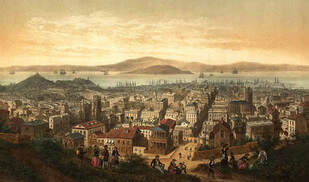 San Francisco San Francisco The forementioned Lt. McArthur was commander of USS Ewing, and Washington Allon Bartlett was one of its officers. By August 31st, 1850, the USS Ewing had already worked its way south to San Diego. At the end of December 1850, the USS Ewing was severely damaged in a storm while attempting to take the new land branch of the Pacific Coast Survey to Monterey Bay. Upon her repair, she traveled up the coast to the Columbia River. If Blunt was with still with the USS Ewing, he was back by early to mid-summer of 1851, when he was a signer of the constitution of the San Francisco Committee of Vigilance. This was a vigilante group formed in response to rampant crime and municipal government corruption in a town that had grown from 900 residents to over 20,000 in a short period thanks to the famed Gold Rush. While here, Blunt spent time with friend John Charles and wife, Jessie Benton Frémont, at their home in the same city. Frémont (1813-1890) was an American explorer, military officer, and politician. He had recently been elected a US Senator from California, and later in 1856 would become the first Republican nominee for President of the United States. Simon likely discussed with the couple an idea that he was developing that would help lower lifeboats into the water from ships. This would be foreshadowing at its very best. Meanwhile, I wondered what was occurring with Lt. Blunt's young family back east? At the very least in the year 1850, I found Ellen Key Blunt and Simon’s children living in Baltimore in the large household of Haslett McKim, a wealthy businessman, banker and broker. The residence was located at 27 West Franklin Street, not far from the Baltimore Cathedral. I'm assuming that based on the life of a sailing man, more time for the couple was spent apart than together. Perhaps Ellen traveled out to see him on the west coast? Or maybe a furlough home at some point was enjoyed for the young US Navy veteran with a decade's service logged up to this point. Simon would be back home soon, but not for long. On January 15th, 1852, Secretary of the Navy, Will A. Graham ordered a Naval Commission to select a site for a west coast naval yard. Simon F. Blunt, along with Commodore John Drake Sloat, Commodore Cadwalader Ringgold, and William P.S. Sanger (former overseer of construction of Drydock Number One, Norfolk Naval Shipyard) were appointed to the commission. On July 13, 1852, Sloat recommended the island across the Napa River from the settlement of Vallejo, as it was "free from ocean gales and from floods and freshets." The Navy Department acted favorably on Commodore Sloat's recommendations and Mare Island was purchased for use as a naval shipyard in July 1853 at a cost of $83,410. On September 16, 1854, Mare Island became the first permanent US naval installation on the west coast, with Commodore David Farragut, as Mare Island's first commander. Lt. Blunt was reunited with his family for the Christmas holidays of 1852. The following year of 1853 would prove another busy year for Simon Fraser Blunt. It began with him being named to the new, national Light House Board, in which he would oversee the New York district. It appears that Blunt had a home in Washington, DC, but had made a permanent move to New York, and I assume that his family was in the plan as well, but I'm not positive about this. I do know that he was soon to work inspecting and building lighthouses with particular focus on the Long Island Sound and vicinity. 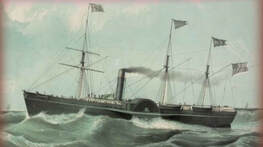 Not so “Golden” Moment Somehow, Simon F. Blunt switched gears and left lighthouse inspection to become a steamship captain. I don't know if it was just a factor of his tenure expiring after the initial review of lighthouses or not, but he was now going to shuttle back and forth to the west coast. By mid-1853, Lt. Blunt had been hired as the captain of the SS Winfield Scott, which carried passengers, mail and cargo between San Francisco and Panama. The discovery of gold in California brought thousands of fortune seekers from the east and around the world. To meet this new demand for travel and resources, shipping and maritime activity increased dramatically. Sailing ships and steamers carried people, food, and supplies up and down the coast and from the eastern United States. A typical voyage from New York to San Francisco brought passengers first to Panama and, once there, it often took over a month for another ship to arrive and take them up the Pacific seaboard. In 1847 two steamship companies connecting New York with San Francisco and the Oregon Territory and charged primarily with the important task of delivering mail were subsidized by the federal government. The Steamship Company and the Pacific Mail Steamship Company acquired many steamships to travel the Panama route. Independent steamship companies competed with the mail steamships by promising shorter voyages. To reach their destinations more quickly, ships often risked navigating the narrow Santa Barbara Channel rather than traveling around the Channel Islands. The Winfield Scott was owned by the Pacific Mail Steamship Company. Loaded with over 300 passengers and crew, bags of mail, and between $1-$2 million in gold, the steamship departed San Francisco for Panama on December 1st, 1853. The next evening Captain Blunt chose to pass through the Santa Barbara Channel to save time. The fog was dense, but he knew his course. Believing he had passed the islands, Blunt turned southeast, an unfortunate and tragic miscalculation. At 11:00 pm, the Winfield Scott crashed into a large rock off Middle Anacapa Island at full speed, striking two holes in the bow. The stern then struck, knocking away the rudder, and the ship began to sink. 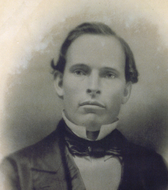 Asa Cyrus Call Asa Cyrus Call Captain Blunt sent a boat to find a place onshore for the passengers and ordered everyone on board to abandon ship. The large group was brought to the beaches of Anacapa where they camped for nearly a week. Another ship, the California, saw the smoke from the passengers’ fires and rescued the women. It returned on December 9th and removed the rest of the passengers. The company of the Winfield Scott was left on the island to attempt to recover mail, baggage, furniture, and some of the machinery from the wreck, but there was little hope of saving the ship or of getting it off of the ledge. An eyewitness account by one of the passengers, an Ohio native named Asa Cyrus Call (1826-1888),can be found online thanks to descendants John and Virginia Call who transcribed/published Cyrus’ diaries (kept between 1850-1853) back in 1998: 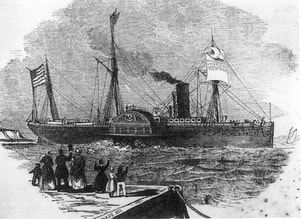 The initial departure of the USS Winfied Scott The initial departure of the USS Winfied Scott The Winfield Scott Dec. 5th, 1853. A rock in the Pacific, 20 miles from the coast - Monday, Dec. 5th, 1853. I embarked on the Steamer Winfield Scott last Thursday, and at 12 o’clock we left Vally’s St. Wharf for Panama. We had fine weather till Friday evening, when it became foggy. One of the boilers had been leaking through the day which had retarded our progress, and the Sierra Navada had passed us, but it was repaired on Friday afternoon, and we were running about twelve miles an hour, when I went to bed on Friday night. This was about 9 o’clock. I had just got to sleep, when I was awakened by a tremendous shock. I knew we had struck a rock and hurrying on a part of my clothes I hurried up on deck where I found a general panic, but the steamer was backed off and with the assurance that all was right the most of the passengers retired again to their rooms. But I didn’t believe she could have struck a rock with such force without sustaining some injury, and not knowing what the upshot of the matter might be, I went down to my state room and put my money and all other valuables in my trunk into my saddle bags, and went into the upper saloon intending to be ready for what was to come next. I had hardly taken a seat when the steamer struck again, and with such force, that it seemed as if the ship was breaking into a thousand fragments. I again hurried on deck, and went forward to see if I could see land. It was so dark I could see nothing, but I could distinctly hear the roar of the breakers ahead, and on the larboard side. The steamer was unmanageable, and the order was given to let off the steam and to extinguish the fires to prevent the ship's taking fire. The decks were densely crowded but considering the circumstances the people behaved remarkably well. It was a perfect jam. And all I could distinguish was an occasional small shriek as the ship lurched to one side giving evidence that she was sinking. About ten minutes after we last struck the long boat was lowered, and I heard the Captain call for the ladies to go aboard. Some men pressed towards the boat but the Captain’s orders were “knock the first man overboard that attempts to get into the boat.” Meanwhile some life preservers were got up and were being distributed among the passengers. There was now a great breach in the steamer and the water pouring in like a river. Our only hope was that she might not sink entirely, as we could feel her sliding down the side of a ledge of rocks. Pretty soon the fog began to break away a little and we could see the light in the longboat as she was coasting along in search of a landing. We could also see the top of a high peak just ahead of the ship and pretty near, but it seemed perpendicular and the white foam and the roar showed that we could never hope to land there. As soon as the life preservers were distributed, the other ships boats (five) were lowered, and filled with passengers. They all held about one hundred and fifty, and there were five hundred and twenty on board. After being gone about half an hour, the long boat returned, having found a landing. And in about two hours all hands were taken off, and were landed on a rock about fifty yards long by twenty five wide. The next day we came to a larger rock or Island, about half a mile long by 100 yards wide. We have succeeded in getting provisions and water enough from the wreck to do us so far. The sea has been quite smooth, or we should have been all lost. A boat went off to the mainland day before yesterday and returned last eve. An express has been sent to San Francisco and I shall look for a steamer in three or four days. Robbery and plunder has been the order of the day since the wreck. But today we appointed a committee of investigation and have had everything searched. A good deal of property has come to light, and two thieves have been flogged. I have recovered a pair of revolvers, a Bowie knife, and some clothing, but I am a good deal out of pocket yet. But probably my other things never came ashore. We are on short allowance, but I today shot a seal with my pistol, and we shall have a luscious dinner. We are expecting a schooner from the main land with supplies of water and provisions. December 9th 7 p.m. The old steamer California came to our rock sometime in the night last night, and made her presence known by firing cannon. We climbed to the top of the rock and made a large fire of weeds, which is the only fuel we have on the rock. The sea was very rough which made it dangerous getting onboard, but we finally accomplished it without any very serious accident. It is now supposed that there were one or two men lost when we were wrecked, as they have never been seen since. One was a Mr. Underwood, a butcher by trade. After seeing to the rescue of the passengers and salvage of the mail and cargo, Captain Blunt continued “to Atlantic States on a visit to his family and for the purpose of representing in person, the loss of the steamer of which he formerly had commanded." Blunt would be cleared of any wrongdoing. An article from the time gives the sentiment of the passengers in regards to the accident. As an aside, between 1850 and 1900, at least 33 ships were wrecked in the same Channel. The Winfield Scott still lies beneath the clear waters of Channel Islands National Park. Divers regularly visit it still to this day. Simon Fraser Blunt and the passengers of the USS Winfield Scott made it back to New York City on January 29th, 1854 as evidenced by two news mentions in the New York Herald. Sadly, this would be Simon Fraser Blunt’s last big adventure. I don’t know how he spent his last four months after returning home to the east coast from California, but he would die in Baltimore on April 27th, 1854 at the age of 35. His funeral was covered by the Baltimore Sun as his mortal remains were placed alongside his famous father-in-law within the Howard family vault in Old St Paul’s Cemetery in Baltimore. To support herself, and her children, Ellen Blunt worked as a copyist for the US Patent Office , where, by 1855, Patent Commissioner Charles Mason was employing four women clerks, including Clara Barton, who later founded the American Red Cross. In mid-1855, however, when Mr. Mason resigned, the women were forced to work at home because Secretary of the Interior Robert McClelland, who had assumed supervision of the Patents Office, objected to "the obvious impropriety in the mixing of the two sexes within the walls of a public office." Their pay was reduced to the piecework rate of ten cents per hundred words, and during some of the following months, they were given little or no work at all. Interestingly, Ellen was the subject of a March 7th, 1856 letter by Jessie Benton Frémont (wife of the fore-mentioned California Senator and presidential candidate) to Washington DC socialite and “Navy commander wife” Elizabeth Blair Lee. In this correspondence, Mrs. Fremont laments Ellen Key Blunt's financial situation, one that took a nose-dive following the sudden loss of her husband (Simon). Frémont attempted to intervene on Blunt's behalf by writing to George W. Blunt, a prominent publisher of nautical charts and maps (with no known relationship to Simon Blunt), imploring him to buy a patent for a device developed by Simon Blunt to lower lifeboats into the water. By the end of 1859, Frémont was somehow exasperated with George Blunt and “gave up the ship” so to speak. Mrs. Blunt made ends meet by writing and lecturing around the east. She received help from her siblings, as her sister Mary Key Pendleton helped her reputation in her home of Cincinnati, Ohio. By decade's end, Ellen and her three children could be found living with her sister, Elizabeth Howard, and brother, Charles Key, in Baltimore at Mount Vernon Place. The home must have been a great scene of sadness at the time of brother Philip Barton Key's murder (February 27th, 1859) by New York congressman Daniel Sickles. The subsequent court proceedings, in which Sickles would be acquitted, was said to have been the trial of the century and featured the first successful use of the temporary insanity plea–but that's a story for another day. Thankfully, the Key children's mother, Mary Tayloe Lloyd Key would be spared from enduring the trial as she died on May 18th, 1859 at the age of 74. Ellen would relocate to Paris in 1861. While there she gave dramatic readings or her works. She most likely moved due to the American Civil War and the instability of both Baltimore and Washington, DC at that time. The family was Southern leaning and some of her poems and essays reflect this sentiment wholeheartedly. Her reputation was preceded by her father's patriotic tune, and her brother's brutal murder. While in Paris, she must have okayed the move of Blunt’s body in October, 1866 to Frederick, Maryland. He would be buried in the new Key family plot in Area H/Lot 439. This was made possible by Fredericktonian George Murdoch Potts who it is said persuaded two of Francis Scott Key’s daughters to move the patriot’s body back to his native Frederick for re-interment in the town’s new cemetery, opened just 12 years earlier. Key, his wife Mary, son Francis Scott Key, Jr. and Simon F. Blunt were buried here on October 6th, 1866 after being brought from Baltimore aboard train. Blunt's Lasting Legacy The schooner the S F Blunt was built in 1854-1855 at Puget Sound by William Ireland. It would make many journeys off the coast of northern California, especially between San Francisco and Sacramento. You may think of California's capital city as being far inland from the coast. This is true, but the real city of Sacramento was developed around a wharf, called the Embarcadero, on the confluence of the American River and Sacramento River which had been developed in 1849 as a result of gold discoveries at Sutter's Mill in the area of Coloma. The port was used increasingly as a point of debarkation for prospecting Argonauts heading eastwards, and supplies were readily needed. Unfortunately the S F Blunt would suffer a series of mishaps. It became waterlogged at Albion, California in November, 1862. Another accident occurred in 1865 in Tomales Bay. The two-masted sailing schooner was repaired and would sail another day until it was waterlogged again off the Mendocino Coast in May, 1868. This was the proverbial "strike three!," as the schooner was refloated and wrecked off Point Arena in 1868. Simon F. Blunt's journal and a collection of his letters are archived in a collection in his name at the Virginia Historical Society. More letters can be found in the Mason Family Papers, 1825–1902 collection at the same institution. Simon and Ellen’s son and grandson are buried in Arlington Cemetery. John Yell Mason Blunt, received his education in Washington and Paris. He was fluent in English, French, Spanish, and German and the author of two books: Maxims for Training Remount Horses for Military Purposes, and An Army Officer's Philippine Studies. John was 12 when he and his two sisters moved to Europe. While still a teenager, John enlisted in the French Army and became a member of the Red Cross Corps. He later transferred to the Papal Zouaves, a unit formed by the Papal States to fight their incorporation into the new Kingdom of Italy. John was among the last troops to surrender when the Italians took Rome in 1870. John returned to France with a French unit of the Papal Zouaves, and fought in the Franco-Prussian War. Subsequently, he lived with his mother in Paris during the Commune of 1871. He next went to Spain and fought as a cavalry captain in the Carlist War of 1872 and 1873 on the side of Juan Carlos, the Pretender to the Spanish throne. After the war, he remained in the service of Juan Carlos in Paris and Marseilles until 1880. At this time John's mother moved to Great Britain for health reasons. Accompanying her, he joined the British Army and served in the First Royal Dragoons, a cavalry unit that did police work. Meanwhile Ellen continued her writing and elocution opportunities throughout Europe. Ellen Key Blunt died on March 30th, 1884 in the coastal resort town of Tendy, Wales. I assume she was buried here instead of being brought back to the United States and laid by her husband’s side in Mount Olivet. I couldn’t find her exact burial location. Following his mother's death, John Y. M. Blunt resigned from his British employment and returned to the United States. He joined the US Army and served in the cavalry. He rose again to the rank of captain, serving in Maryland, Kansas, Cuba, and the Philippines. He retired in Manila after seventeen years of service in 1902. John remained in Manila and worked as a translator in the Philippine Constabulary until his final illness and death in 1910.  John’s son, Wilfrid Blunt was a veteran of World War I and World II, having graduated from the US Military academy at West Point in 1911. During World War II, he was the commander of Camp Carson in Colorado Springs, CO. He would retire in 1948. Simon Blunt had two daughters, Alice Key Blunt and Mary Lloyd Blunt. Neither daughter married, but led very different lives. The former traveled extensively and lived with relatives, and in various hotels in Baltimore throughout her adult life. She spent summers in Canada, which afforded opportunities to visit her sister. Ms. Blunt was quite active in patriotic affairs and regularly sat on planning and social committees in her home of Baltimore. In fact, she was co-founder of the Baltimore Chapter of the Daughters of the American Revolution in March 1892. This group is also known (fittingly) as the Francis Scott Key Chapter. Ms. Blunt would serve as Maryland's second state regent in 1894, and was followed in succession by Betty Maulsby Ritchie, founder of the Frederick Chapter, DAR and buried only 30 yards to the south of Mrs. Blunt's gravesite. Alice Key Blunt was the subject of a Frederick News article in early summer of 1924 in which she visited her grandfather's hometown and made a visit to Mount Olivet to see the graves of her father, uncle and grandparents. The town and garden cemetery must have made a good impression on her, as she would choose to be buried here three years later. Alice Key Blunt would die on May 13th, 1927 at Baltimore's Hotel Sherwood. She is buried here in Area H directly in front of her seafaring father. I couldn’t find Mary Blunt’s grave, but from John Y. M. Blunt’s obit, I learned that she was a nun and teacher in Montreal. I found Sister Mary Blunt in the 1921 Canadian Census living at Sacred Heart Roman Catholic School and Convent. The Sacred Heart School of Montreal was founded in 1861, and built around the principles that were at the core of the Society of the Sacred Heart, which was begun by Saint Madeleine Sophie Barat in 1800. Among those principles was to educate girls to take part in society beyond the home or the church. I’m assuming that Mary’s time abroad in Europe likely influenced her to become a sister. One more individual of note is buried in this Key plot in Area H. In between the graves of Simon Blunt and his brother-in-law, Francis Scott Key, Jr., lies the grave of a nephew to both gentlemen—John Ross Key III (1837-1920). I wrote a story about this talented fellow back in July, 2019 entitled “Star-Spangled Artist.” John Ross Key III was a world class painter and grandson of Francis Scott Key. He was born in Hagerstown on July 16th, 1837, two months after the death of his father, John Ross Key II (1809-1837). Young Key’s mother, Virginia Ringgold Key (1815-1903), was the sister of Commodore Cadwalader Ringgold, a continual figure in the life and career of Simon Fraser Blunt.
0 Comments
 When referring to somebody by the moniker, “junior,” we are typically referring to the younger of two men bearing the same full name—most commonly, a son named after his father. It is often written as Jr. or jr. following the name. Famous “juniors” in US history include Martin Luther King, Jr., John F. Kennedy, Jr., Teddy Roosevelt, Jr., Robert Downey, Jr., Sammy Davis, Jr., Lon Chaney, Jr., Dale Earnhart, Jr., Ken Griffey, Jr., Odell Beckham, Jr., Cuba Gooding, Jr. and the list goes on to even include a brand of candy featuring small rounds of mint filling, covered in a dark chocolate coating. Here at home, the founder of Frederick, Daniel Dulany (1685-1753), was aided greatly by a same-named son. This lad grew up to be one of the greatest legal minds of his time, but he actually didn’t carry the “Jr.” suffix, but instead opted to be called Daniel Dulany, the Younger (1722-1797). Not many know this, but the most famous, and well-known, occupant of Frederick’s Mount Olivet Cemetery had a son, who was a “junior.” I'm, of course, talking about Francis Scott Key. In fact, I would venture to say that the reason we have Francis Scott Key in our cemetery, is likely due more to Francis Scott Key, Jr. than to anything else. On Monday, October the 1st, 1866, the body of Francis Scott Key, Jr. was carried through Mount Olivet’s main gate by use of a horse and wagon. It would be laid to rest in the cemetery’s Area H/Lot 439. The funeral cortege doesn’t seem to have been well-attended, or possibly even known about by the locals for that matter. This gentleman’s mortal remains had been removed, likely that same morning, from a vault in Old St. Paul’s Church burying ground in downtown Baltimore, not far from Camden Yards at 733 Redwood Street-- just off Martin Luther King, Jr. Boulevard. Key’s coffin was taken and placed aboard a Baltimore & Ohio Railroad train at that place and traveled to Frederick for reburial. Frederick’s freight depot was the destination, a grand building once located on South Carroll Street, near East All Saints Street where a parking deck now stands today. Its claim to fame was that it was said to be "the oldest depot in the world" up to its demise in the early 20th century. Key’s body did not travel alone, so to speak. Joining FSK, Jr. for this voyage west from “Charm City” were his parents, Francis Scott Key and Mary Tayloe (Lloyd) Key, and another gentleman named Simon Frazier Blunt. Mr. Blunt had died in 1854, and had been married to FSK, Jr.’s sister Ellen Lloyd Key. The renowned Francis Scott Key had died earlier yet, on January 11th, 1843, while visiting his daughter Elizabeth Phoebe (Key) Howard, then living in Baltimore at Mount Vernon Place. Elizabeth was Mr. Key's oldest child, and she had married Charles Howard (1802-1869)in 1825. Mr. Howard was the son of Maryland's fifth governor John Eager Howard (1752-1827) who was also a Revolutionary War commander, US Senator, and organizer of Baltimore's defenses for the War of 1812. Howard County takes its name from this accomplished gentleman. Today, a plaque on Mount Vernon Place United Methodist Church marks the former site of the Charles Howard home. A decision was made at the time of our famous songwriter's death to place his body in the Howard family’s funerary vault, located a few short blocks away in St. Paul’s graveyard. This was an interesting choice, because Key’s home at the time (of death) was Washington, DC, specifically not far from the US Capitol building. And better yet, why wasn’t Francis Scott Key buried in his old hometown of Frederick? As far as Frederick, the prime option for burial would have been the old All Saints’ Burying Ground, located basically 100 yards west of the B&O Railroad’s freight depot. At the time (1843) the graveyard had his parents as occupants, but had lost some of its luster over a century of use. The All Saints’ congregation had vacated their original church structure at this location nearly three decades earlier, wanting to be in a more prominent area of town near Court House Square. Meanwhile, there was no fancy-schmancy "garden cemetery" in the form of Mount Olivet, as this wouldn’t come into being until 1852—nine years after FSK's death. Mrs. Key died on May 18th, 1859. Known more commonly by her nickname of "Polly," she would be laid to rest in Baltimore instead of Washington, DC or, more surprisingly, her native Annapolis. Mary was placed in the Howard family crypt with her husband in St. Paul's. According to historian Edward S. Delaplaine, Francis Scott Key had strongly considered Frederick for his place of burial. The illness that preceded his death came very quickly in the form of pleurisy turned pneumonia. Delaplaine’s 1937 biography entitled Francis Scott Key: Life and Times states the following: “Many years later it was recalled that Key had expressed a wish to be buried “ ‘neath the shadows of the everlasting hills” in Frederick County.”  George M. Potts George M. Potts Apparently, some local movers and shakers here in Frederick rekindled the sentiment after the re-emergence of “the Star-Spangled Banner’s” popularity during the American Civil War—at least in the North, that is. People recalled the song’s author, and many in his old home county wondered where he had been laid to rest. Some folks thought that he should be here in Frederick instead of Baltimore, where he had never lived. The argument was strengthened by the fact that we now had a new and progressive “garden cemetery” which had officially opened in 1854. The chief responsible party for making the request and arrangements for re-interment of the Keys in Mount OLivet was George Murdoch Potts(1807-1893). This gentleman farmer was the son of Judge Richard Potts and Eleanor Murdoch. They were removed from All Saints Burying Ground and placed in, what we call, the Potts Lot--the only “gated community” within Mount Olivet. Here are buried members of the Potts family and also that of the Marshall family, whose patriarch, Richard Marshall, was one of the cemetery’s original founders and responsible for having Francis Scott Key’s parents buried here from the fore-mentioned All Saints' Episcopal graveyard. Mr. Marshall also made arrangements to bring Francis Scott Key's sister, Anne Taney here as well.  Alice Key Pendleton Alice Key Pendleton The story goes that Mr. Potts corresponded with two of Key’s daughters, the earlier mentioned Elizabeth Howard and another, Alice Key Pendleton. He introduced and inquired about the possibility of reburial in Frederick. Alice Key had married George H. Pendleton (1825-1889), an American politician and lawyer who represented Ohio in both houses of Congress and served as the Democratic nominee for Vice President of the United States in 1864 on the ticket with George B. McClellan. It has been said that Key’s daughters were against the idea of removal from Baltimore at first, however they warmed up to it over time. This is where “Junior” comes in. I truly feel that Francis Scott Key Jr.’s death on April 4th, 1866 turned the tide. Maybe the concern arose with the family that there may not be enough room in the Howard vault for additional family members, whether they be Keys, or more importantly, Howards. Whatever the case, a decision was made for reburial in Frederick, and newspapers throughout the country carried the news and appear to give Mrs. Pendleton sole credit for the decision.  I also think that whether the Key daughters knew it at the time or not, the opportunity for erecting a more fitting and substantial memorial to their famous father was likelier in his hometown of Frederick, without competing with the fine achievements of "crypt-mate" John Eager Howard and other Howard notables. The beautiful new cemetery in Frederick could accommodate additional Key family members for future burial and various forms of funerary sculpture and architecture not possible at old St. Paul’s. Permission was granted, and as said earlier, October 1st, 1866 marked the date of the 47-mile move of the four individuals in question. Here is another aside, as I found an article from a local Frederick paper from May, 1920 that recounted the fact that undertaker A. T. Rice was responsible for conveying the Key bodies from the train to Mount Olivet. Apparently, Mr. Rice used an old fashioned hearse with "a hat top and no adornment, and drawn by one horse" for transporting Francis Scott Key Sr.'s coffin. Francis Scott Key, Jr. Francis Scott Key, Jr. was born October 7th, 1806 in Georgetown. Not much is known about his childhood, but we can get a glimpse from Edward Delaplaine’s biography of Francis’ father: “A strong bond of affection existed among the members of the Key family. Francis Scott Key himself was deeply affectionate. He poured out his love for mother and father, for his sister Anne, and for Polly and the children. The family was a happy one. When Key reached forty, Polly had already given birth to eight children. Their eldest child, Elizabeth, was nearly sixteen. Maria was over fourteen. Frank, named after his father, was approaching thirteen. John, named after his grandfather, was ten. Ann was eight. Edward, named for Polly’s father, was nearly six. Daniel Murray, named for Key’s old college mate, was three. The baby, Philip Barton, named for Uncle Philip, was a year and four months. Traditions are redolent of the many happy hours in Georgetown. “The shady lawn and orchard sloping to the Potomac’s edge,” wrote one of Key’s granddaughters many years after his death, “and the terraced garden with it walnut trees and Lombardy poplars shading the walks, made a happy playground for the household band. Here, for each child, a tiny round garden had been made by the gardener, under their father’s directions, and what ecstasies of delight abounded when the sprouting seed took the shape of names, and ‘Maria,’ ‘Lizzie,’ ‘Anna,’etc., were clearly spelled out in the center of the green seedlings!”  Terra Rubra Terra Rubra Education was important for the Key children, as was a sense of family history. The Keys regularly returned to the Key family plantation of Terra Rubra each summer. The location is in today’s Carroll County, just over the border at present day Keymar. Info on Francis Scott Key, Jr. is hard to find. Like his father, he would receive his upper level education in Annapolis. He did not attend St. John’s College, but rather the US Naval Academy. While here, he would marry Elizabeth Lloyd Harwood on April 5th, 1826. Miss Harwood was a first cousin through his mother’s side of the family—the Lloyds. Interestingly, “Junior’s” mother, Polly Key, would now serve a new role as mother-in-law to her son’s new bride. Elizabeth had known Polly solely as an aunt for her first 18 years. The family can be found living in multiple places over his life. After a childhood spent in Washington, DC, he can be found in Anne Arundel County in the 1830 census, Carroll County in 1840, Baltimore County in 1850 and Howard County in 1860. The couple would have eight known children: Henry Harwood Key (1827-1889), Elizabeth Lloyd Key (1829-1919), Fannie Scott (Key) Dorsey (1840-1925), Alice Turner (Key) Smith (1833-1907), John Francis Key (1838-1920), Daniel Murray Key (1841-1913), Anne Arnold Key (1844-1850) and Wilfred Key (1845-1865) who died as a POW during the Civil War. I found an article from 1907 which helped shed a little more light on my subject. It comes from a front page article appearing in the Baltimore County Union, published in Towson (MD) on January 5th of 1907. In particular, the article talks about Mr. Key as being a former host of an elegant property known as “the Elms.” Mr. Key would be a resident of Harford County at the time of his death on April 4th, 1866. His obituary reports that his exact location of death was the Maltby House hotel. Junior’s grave is located north of the original site of his parent’s graves on Area H, not far from Confederate Row. As visitors came to see the great patriot’s grave, his was spotted as well in close proximity. An article that was carried in many papers in 1878 talks of the shabby condition of the Key gravesite, especially in relation to other well-kept lots surrounding it.  This outspoken article sparked attention. This was combined with questions asking why this “great American patriot” was not receiving the same treatment as the grand monument movement of the time in which Civil War soldiers and officers of both sides were being honored with beautiful works of marble, granite and bronze. Within two decades, a grand monument was crafted for Francis Scott Key, Sr., and he and his wife were moved for a third, and final, time to a vault beneath the work crafted by Alexander Doyle and immigrant sculptor Pompeo Coppini. Replica stones would eventually replace the original gravemarkers for Francis and Polly. All the while, Francis Scott Key, Jr’s gravestone has endured the trials of time, weather and obscurity--“Good Old Junior.” NOTE: Francis’ wife (Elizabeth Lloyd Harwood Key)would live into her 90s, dying in 1902. She is buried in St. Anne’s Cemetery in Annapolis. At least two of her and Francis Jr’s children are buried here too: Henry and Elizabeth.
So the 275th anniversary of Frederick is upon us, however after this year of 2020, it’s hard to get excited about anything outside an end to Covid-19 and political squabbling. Frederick Town, as it was originally named, was established in 1745 by lawyer and land speculator Daniel Dulany of Annapolis. That year, property lots were surveyed here, east of Catoctin Mountain, in the Monocacy Valley. The exact setting was Dulany’s parcel named Tasker’s Chance located in the extreme backwoods of Prince Georges County. For one reason or another, an arbitrary date of September 10th somehow arose as Frederick’s official founding date, but the origin/source of this particular day is somewhat unknown. The origin likely lies in a long lost “day planner” of either Mr. Dulany, or his hired surveyor, Thomas Cresap—the latter quite an interesting story himself! Regardless, three years later in 1748, Mr. Dulany would petition the Maryland General Assembly in establishing a brand, new county. He succeeded and Frederick County was carved out of the existing Prince George’s County, and Dulany’s planned community of Frederick Town would grow in stature as a new county seat. “The town of Frederick was laid out on Tasker’s Chance in September, 1745, on both sides of Carroll Creek.” The quotation above comes from page 24 of a book I consider myself lucky to have in my collection. I’m not alone, as many are fortunate enough to own, or possess, a copy of one of the best reference publications and resources of our local history. Simply titled: History of Frederick County Maryland, this two-volume work was originally published in 1910 by the L.R. Titsworth & Co. and consists of 1,635 pages written by two special gentlemen: T. J. C. Williams and Folger McKinsey. Judge Thomas John Chew Williams (1851-1929) was a newspaper editor, historian and prominent citizen of Washington County, who had capped a career in law, politics and newspaper work, with 19 years of service on the Juvenile Court bench of Baltimore. Although not buried here in Frederick’s Mount Olivet, but instead at St. Mark's Episcopal Church at Lappans (Washington County), Mr. Williams was quite familiar with many already buried here within Mount Olivet, and countless more eventually destined to reside here when their time would come. Judge Williams, son of the Rev. Henry Williams of the Protestant Episcopal Church, was born in Calvert County in 1851. At the age of 19, he was admitted to the bar and went to Hagerstown to practice in 1872. While in the law office of William T. Hamilton, then a United States Senator, Mr. Williams became interested in politics, and this association would lead him into the newspaper field. He soon became part owner of the Hagerstown Mail in 1874 at the age of 23. He remained at the Mail until 1891 when editorials attracted attention which led to an engagement as editorial writer on the Baltimore Sun. His first appointment to the juvenile court bench followed in 1910. Aside from his conspicuous work in the town newspaper field in Hagerstown and Baltimore, Judge Williams was the author of a history of Washington County in 1906. This would lead to his follow-up act in tackling of our county's history. To assist him in this endeavor, he would turn to one of the greatest newspapermen in our state’s history, a native of Elkton, Maryland named Folger McKinsey. McKinsey was best known by his pseudonym, the Bentztown Bard—a nod to valuable time spent in Frederick during his storied career. Though well-loved and remembered in many Maryland homes, McKinsey (1866-1950) really made a name for himself here where he was editor of The Frederick News daily and weekly editions. He earned his pen name by regularly writing poems for the local publications, usually “tongue in cheek” entries dealing with current and past events. While here in Frederick, he lived primarily on South Market Street, but is thought to have resided first in the area known as “Bentztown,” the vicinity of Bentz Street’s intersection with West Patrick Street. He rapidly became involved in the community, and is particularly credited for reinvigorating a stagnant effort to have a suitable memorial erected over the grave of Francis Scott Key here. Success in this undertaking was achieved in 1898, and McKinsey’s daughter was captured by photographers on the dedication day in early August. McKinsey eventually took his talents to a larger stage when he moved on to The Baltimore Sun where he was a features reporter and columnist. “The Bentztown Bard” provided readers with countless reflections on small-town life across Maryland from the mountains to shore. In addition, Folger McKinsey was an active debater, a skill that served him well as a friend of “The Sage of Baltimore,” H.L. Mencken of The Baltimore Sun, and a member of Mencken’s Saturday Night Club. He would remain in the employ of The Sun for 42 years, and lived out a gilded life at his 500-acre farm with six miles of waterfront on the Magothy River in Anne Arundel County. A nearby elementary school bears his name. Around 1907, McKinsey was approached by T. J. C. Williams to help write History of Frederick County, Maryland in two volumes. The second volume included biographies on leading members of the Frederick community. The inclusion of a family-oriented biography was a common practice and added incentive, used at the time to help sell the main history textbook (Volume 1) to subscribers. Many of these bio recipients are buried here in Mount Olivet, and it’s no wonder that I regularly call on volume 2 for help with my weekly “Stories in Stone” blog. I first became aware of this two-volume masterpiece back in 1993 when I worked for Frederick Cablevision/GS Communications. I had recently begun work on a video documentary about Frederick City for its 250th anniversary commemoration. The project was completed in time for the official celebration date on September 10th, 1995. Williams and McKinsey’s history would prove a true Godsend to me, as I based the 10-hour documentary on its chronological telling of our rich story up through 1910. I then had to cover the next 85 years on my own with various other sources! I began the documentary with a quote by T.J.C. Williams’ included in his introduction to the work. I thought it fitting to have my big boss, George B. Delaplaine, another newspaper professional and local history aficionado, perform the read. The passage goes as follows: “The history of Frederick County is not merely a local history. It is a history of men and events of national importance and events.”  Edward S Delaplaine Edward S Delaplaine Mr. Delaplaine’s uncle, the Hon. Edward S. Delaplaine, was tasked with writing the introduction for the re-publication of History of Frederick County in 1967—incidentally, the year I was born. Judge Delaplaine (1893-1989), a true local historian of Frederick and a pioneer and promoter of heritage tourism, had this to say in that reprint edition: “The History of Frederick County is a lasting memorial to Thomas J. C. Williams. For more than half a century it has been used as a reference work by thousands of people—by historians and genealogists, by teachers and students, and persons in all walks of life who have desired to find information about early members of their families. Thomas J. C. Williams performed a valuable service in preserving information about a host of Marylanders, yet his own career had been almost forgotten. The story of his life—how the poor boy from the tobacco plantation toiled as public school teacher, as lawyer, as editor and publisher, as historian, as public servant, as churchman, and as Juvenile Judge, until he became a friend and confidant of publishers, prelates, senators, governors, and presidents—this is the story of a fine American.” Judge Delaplaine is buried here in Mount Olivet and will definitely be chronicled by me one day in this blog. However, today, I just want to connect dots to a lesser known person, forgotten to the past, in an effort to show the true value of Williams’ and McKinsey’s work. I could give countless examples of how it influenced my work as I reflect back on the 25th anniversary of my Frederick Town documentary. Ironically, it was that same Delaplaine family that gave me the opportunity to make historical documentaries, thereby pushing me into the incredible field of public history in the first place. I guess when I think about it, I’m also nearing the fourth anniversary for this “Stories in Stone” blog, which originally began a year earlier as my HSP History Blog on my HistoryShark.com website. As a matter of fact, one of my first blogs was on Frederick founder Daniel Dulany. When we traditionally think of the word biography, imagery of grade school is usually conjured up. It appeared as an early vocabulary word in language arts and English classes, and usually morphed into a written project assignment in which students had to write about someone’s life. And then there was social studies or history class assignments requiring us to read biographies of interesting people in history and retain fascinating facts and anecdotes about their lives. The past week has certainly been a sentimental one for me, likely why I have school on my mind, especially high school. My son, Eddie, began his freshman year at my alma mater of Gov. Thomas Johnson High School. Among his classes this semester are Freshman English and AP History. I can’t believe that 35 years have passed since my high school graduation in 1985. While I’m at it, I find it necessary to thank all my former teachers, but especially the two most influential in my everyday professional life in presenting public history. One was Terry Hershey, my 10th and 12th grade AP English history instructor, who taught me how to write position papers, debate and overcome a fear of public speaking. The other was Mike Bunitsky, my 10th grade and 12th grade AP History teacher who had such a unique lecture and teaching style that not only made history fun, but certainly made it come alive for me and my classmates. Well, in writing this week’s piece, I decided to randomly choose one of the biographical subjects featured in Williams’ and McKinsey’s Volume II of History of Frederick County. I blindly opened the book and pointed to a name on the page. The recipient was a gentleman named John William Molesworth (b. 1848), who also appeared with a picture attached to his bio. I was familiar with the surname, but certainly not this gentleman. Before going any further, this choice had to pass one important test—Is he buried in Mount Olivet? In checking the Mount Olivet grave database, I found the answer to be yes. I went back and read Mr. Moleworth’s biography, before making a quick pilgrimage to his gravesite. Here is how the author(s) depicted Mr. Molesworth: John William Molesworth, well-known in Urbana district, is owner of the “Sunnyside” farm, situated near Ijamsville. He was born on a farm in New Market district, Frederick County, July 1, 1848, and is a son of Thomas and Mary Ann Darby (Kane) Molesworth. The first of the name to locate in Maryland were three brothers, natives of England, who settled in Woodville district, Frederick County. Samuel Molesworth, one of the three brothers, was the grandfather of John W. Molesworth. He was married to a Miss West, and went to farming in Woodville district. The farm on which he lived is in possession of his descendants. He was a Methodist in his religious beliefs. He was the father of five children: Joseph, Thomas, William, George and Matthew. Thomas Molesworth, son of Samuel Molesworth, was born on the family farm in Woodville district, Frederick County, in 1818. He farmed all his life in New Market district, living three miles east of New Market. For thirty-four years, however, he made his home on a rented farm, situated two miles northeast of New Market. He died at Monrovia about 1900. Mr. Molesworth was married to Mary Ann Darby Kane, of New Market. She died in 1897, aged seventy-three years. He was an adherent to the Democratic Party. They were both members of the Methodist Episcopal Church. Their children were as follows: Thomas, deceased, married Drusilla Browning; Susan, the wife of Charles Lowe, of Monrovia; Samuel, of Baltimore County, MD., married to a Ms. Daffin; John William, whose name heads this sketch; Margaret, deceased, was married to Robert Thompson; James, of Howard County, MD., married a Miss Appleby; and Eldridge, died aged twenty-one years. John William Molesworth, son of Thomas and Mary Ann Darby (Kane) Molesworth, acquired his education in the schools of his native county. He was reared as farmers’ boys usually are, being employed in various duties on the home place. When he was twenty-four years old he left home and turned his attention to railroading, becoming a fireman on the Baltimore and Ohio Railroad, with a run between Baltimore and Martinsburg. In 1877, he gave up his railroad position and began to farm the Dietrich place in New Market district, where he remained for a period of sixteen years. In 1893, he bought “Sunnyside,” a farm of 290 acres. Since coming into his possession, the value of the property has been greatly enhanced by numerous improvements. He built a forty-five foot addition to the barn and a porch around the dwelling, besides erecting other buildings. His home was built over a hundred years ago, and is one of the best in Frederick County. He has just installed a new hot water system for heating his house. Mr. Molesworth is one of the most prosperous and successful agriculturalists of Urbana district. He is the owner of another farm in that district, on the Georgetown Pike, containing 207 3-4 acres of cleared land, and having on it a sixteen room house, good barn and other buildings. For many years he has been engaged in the dairy business, and his place is sanitary in every respect. He has a fine herd of Holstein cattle, and for twenty-five years has not missed taking cream to the train. He is also a director in the First Bank of Monrovia.  Mary Thomas Molesworth (1889-1925) Mary Thomas Molesworth (1889-1925) In politics, Mr. Molesworth has always supported the candidates of the Democratic Party. He is connected with the Methodist Episcopal Church in Ijamsville. The Molesworths are known for their large stature. Samuel, the grandfather, weighed 210 pounds. Mr. Molesworth is six feet five inches in height and weighs 275 pounds. His brothers are also large men. Thomas weighed 290 pounds; Samuel was six feet, three and a half inches and weighed 235 pounds. Mr. Molesworth has five daughters, whose aggregate weight is 800 pounds. One of his sons is fifteen years old, stands six feet, three inches and weighs 193 1-2 pounds. Mr. Molesworth was married January 20, 1875, to Margaret Reinhart, daughter of Andrew and Maria (plain) Reinhart, of New Market district, the former living at the age of eighty-nine years and the latter deceased. Mrs. Molesworth is a Methodist. She bore the following named children: Florida Virginia, the wife of H. L. Davis, of Urbana district; Margaret earl, married to Morgan Cecil, of Frederick; Minnie R., the wife of Harry Andrew, of Middleburg, MD.; Mary Thomas, is unmarried; John; and Roger Wright.  The old John W. Molesworth farm is located at the northeast corner of the intersection with MD route 80 (Fingerboard Road) and Prices Distillery Road. St. Ignatius Catholic Church can be found here on the corner today. The old Molesworth homestead and manor house (pictured below) is the centerpiece of a popular bed & breakfast/event destination known as the Fingerboard Country Inn. Operated by Dawn Gordon, the inn is located northeast of St. Ignatius with access off Whiskey Road. 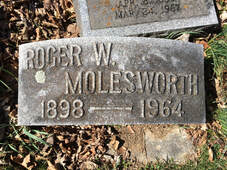 Talk about some interesting and unexpected life details? Well, that’s what you can come to expect with the bios found in Williams and McKinsey. This is true gold for a family researcher or historian who comes upon an ancestor chronicling of this kind. One additional connection I found lies in the fact that John's son, Roger Wright Molesworth (1898-1964) is one of 600 World War I veterans we have in Mount Olivet. A few years ago, we created a memorial page for him on our sister-site MountOlivetVets.com. Our subject, John William Molesworth, died on January 3rd, 1912, just two years after History of Frederick County was originally published. He would be buried in Area OO/Lot 28. Thanks again T. J. C. Williams and Folger McKinsey. From the perspective of a judge and a poet, those who know nothing of our past history of Frederick and Frederick County, will usually experience a fitting “poetic justice” if given the opportunity to read your two-volume set.
Oh, and by the way, Happy Birthday to the City of Frederick......and many, many more! As a final tribute, I leave you with an address and poem delivered by Folger McKinsey upon a speaking engagement here in Frederick in 1911. |
STORIES
|
Archives
July 2024
June 2024
May 2024
April 2024
March 2024
February 2024
January 2024
December 2023
November 2023
September 2023
August 2023
July 2023
June 2023
May 2023
April 2023
March 2023
February 2023
January 2023
December 2022
November 2022
October 2022
September 2022
August 2022
July 2022
June 2022
May 2022
April 2022
March 2022
February 2022
January 2022
December 2021
November 2021
October 2021
September 2021
August 2021
July 2021
June 2021
May 2021
April 2021
March 2021
February 2021
January 2021
December 2020
November 2020
October 2020
September 2020
August 2020
July 2020
June 2020
May 2020
April 2020
March 2020
February 2020
January 2020
December 2019
November 2019
October 2019
September 2019
August 2019
July 2019
June 2019
May 2019
April 2019
March 2019
February 2019
January 2019
December 2018
November 2018
October 2018
September 2018
August 2018
July 2018
June 2018
May 2018
April 2018
March 2018
February 2018
January 2018
December 2017
November 2017
October 2017
September 2017
August 2017
July 2017
June 2017
May 2017
April 2017
March 2017
February 2017
January 2017
December 2016
November 2016




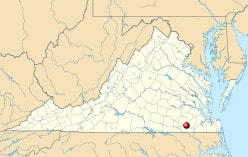





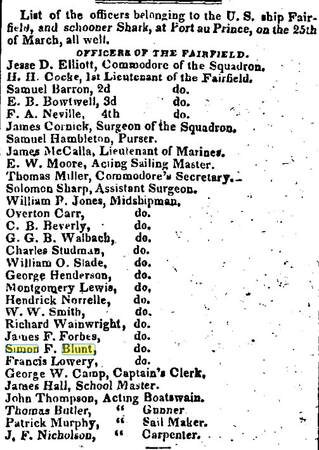
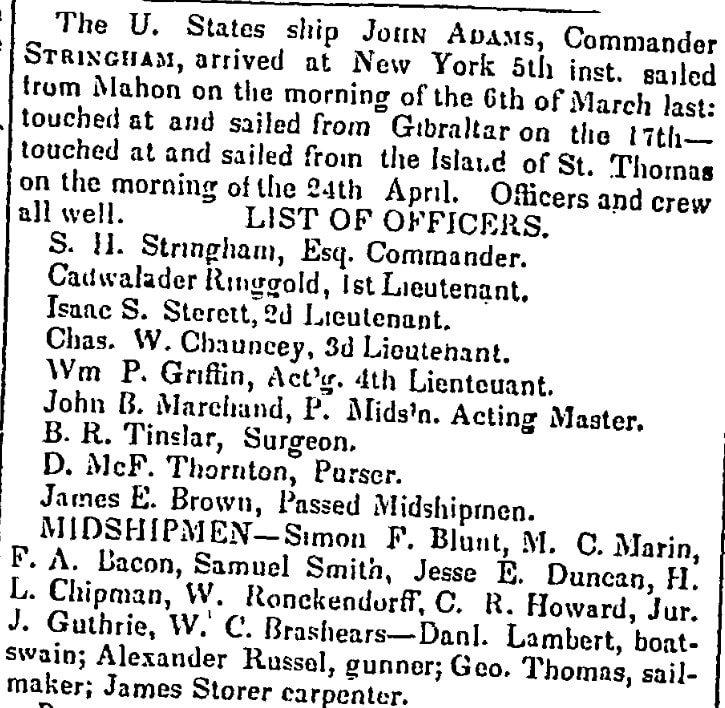
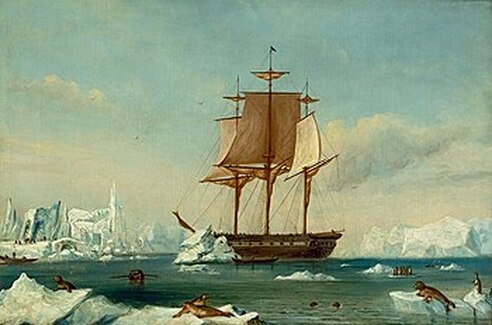





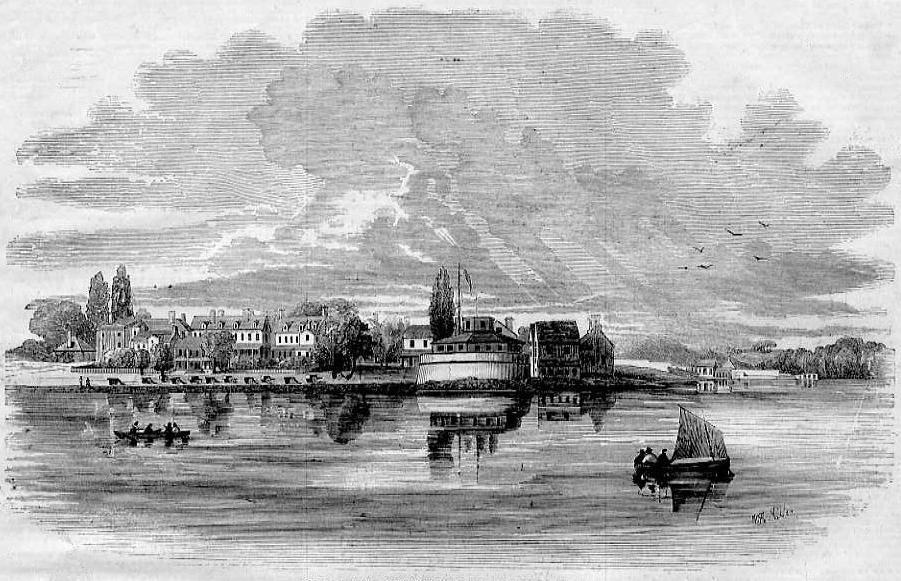















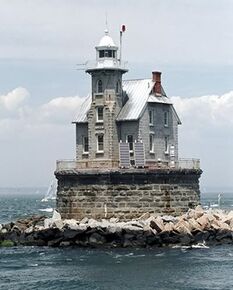


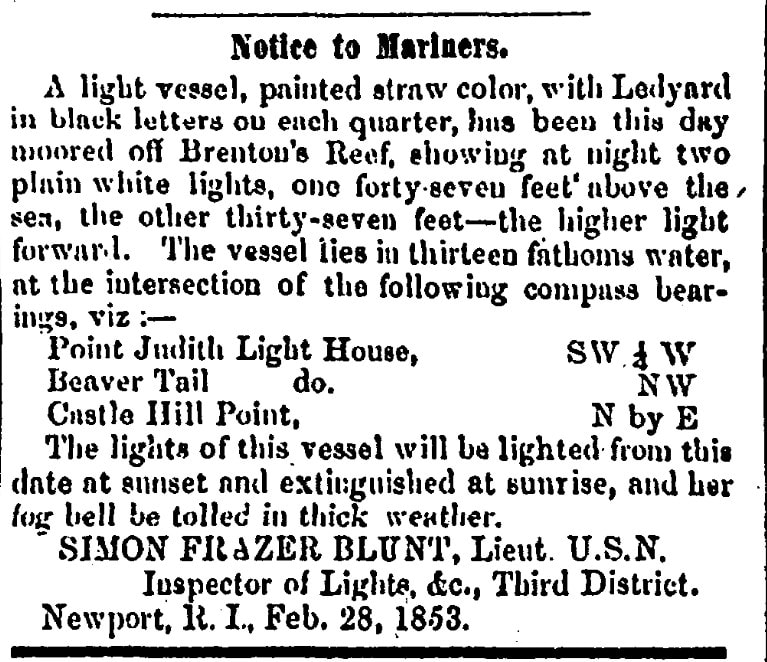










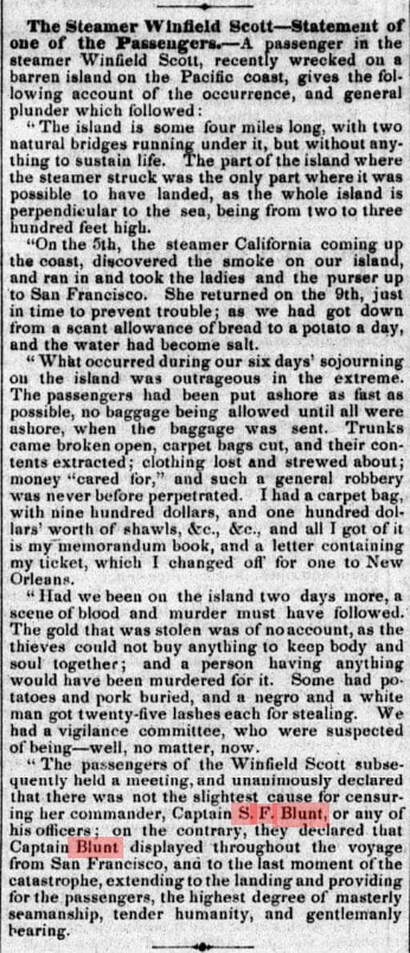







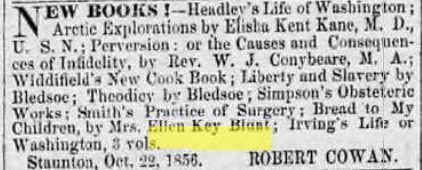

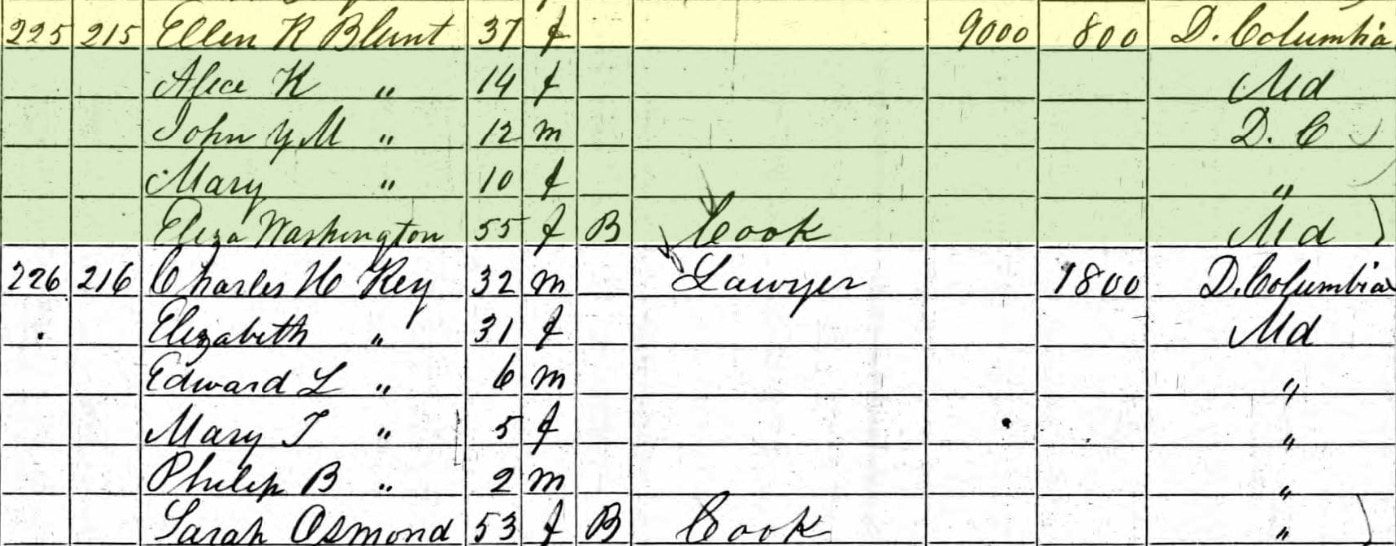

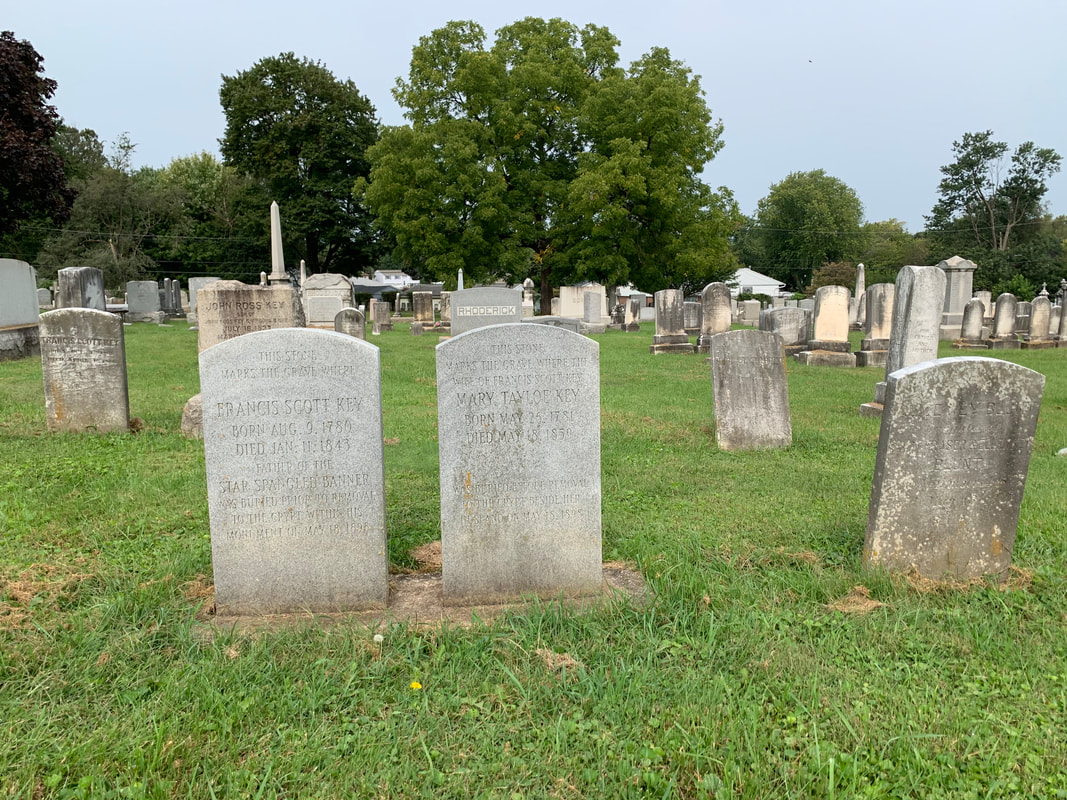
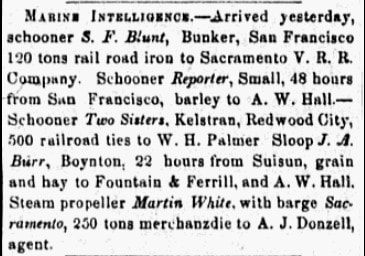



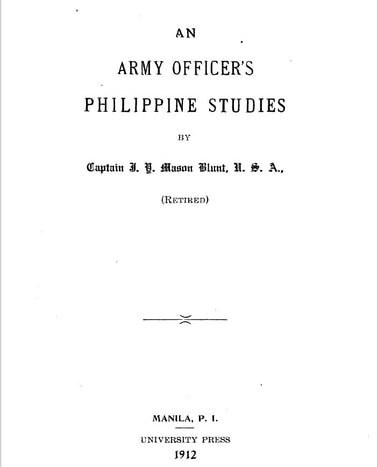











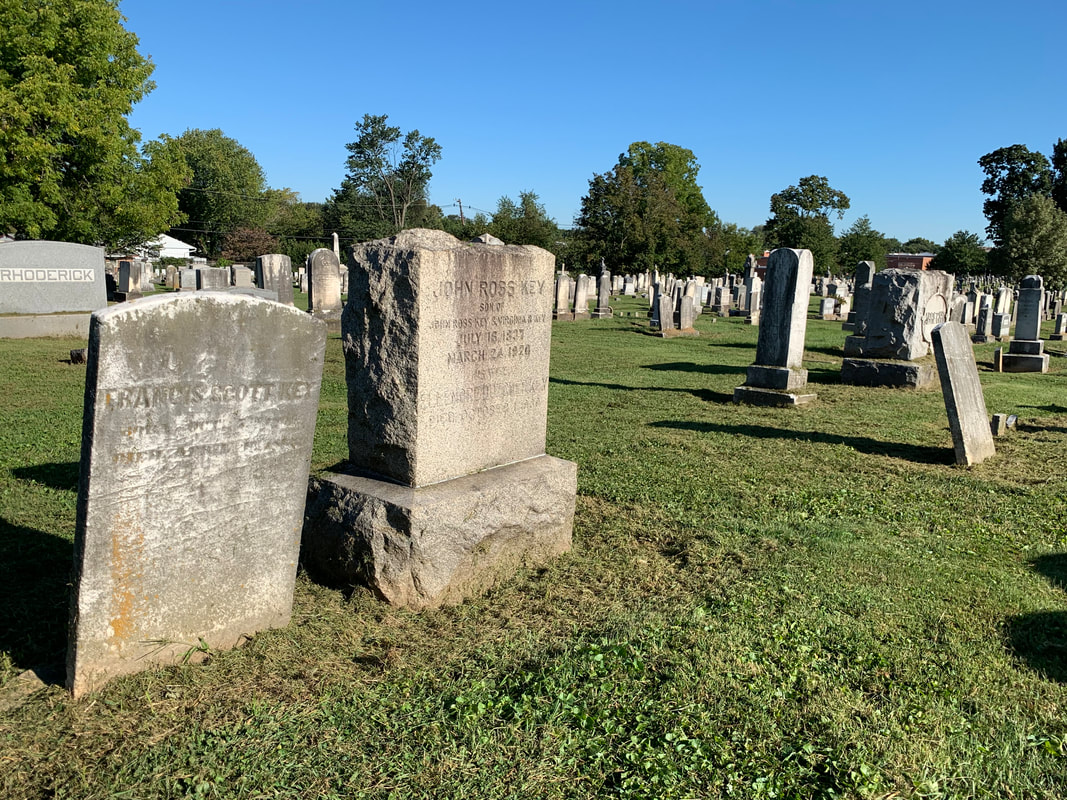




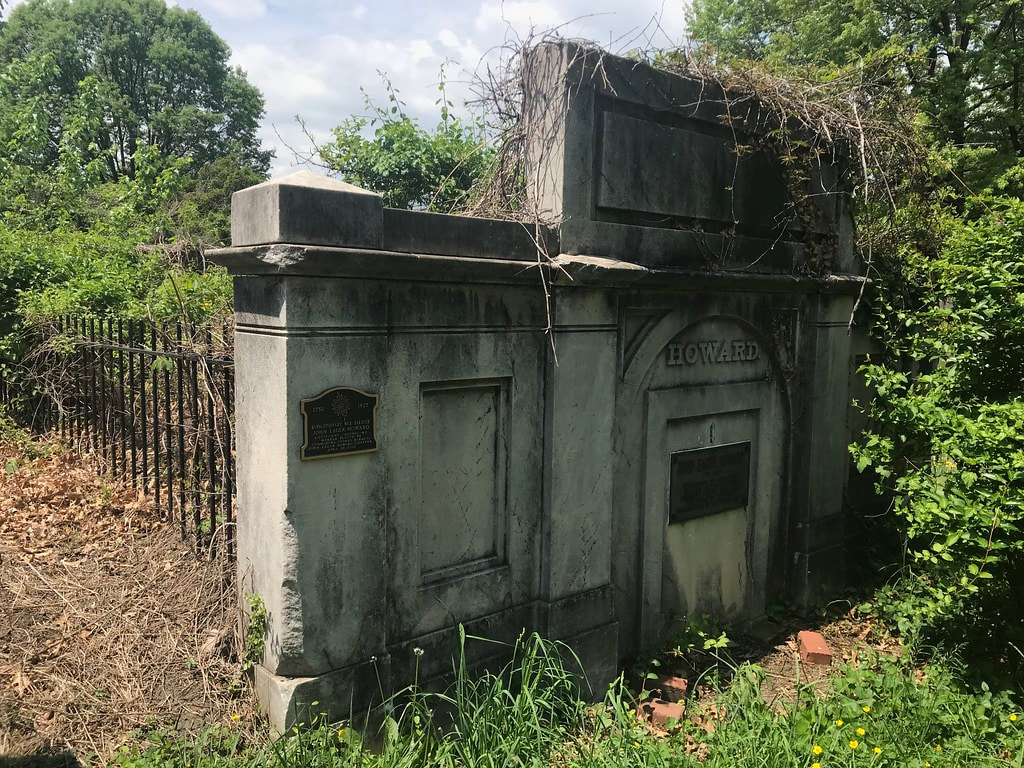
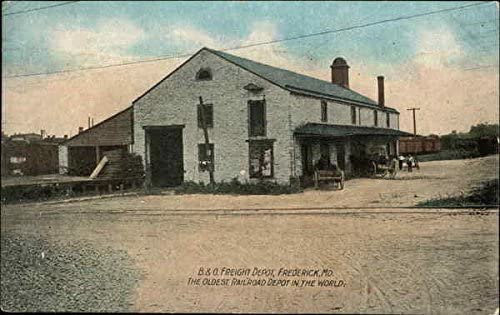


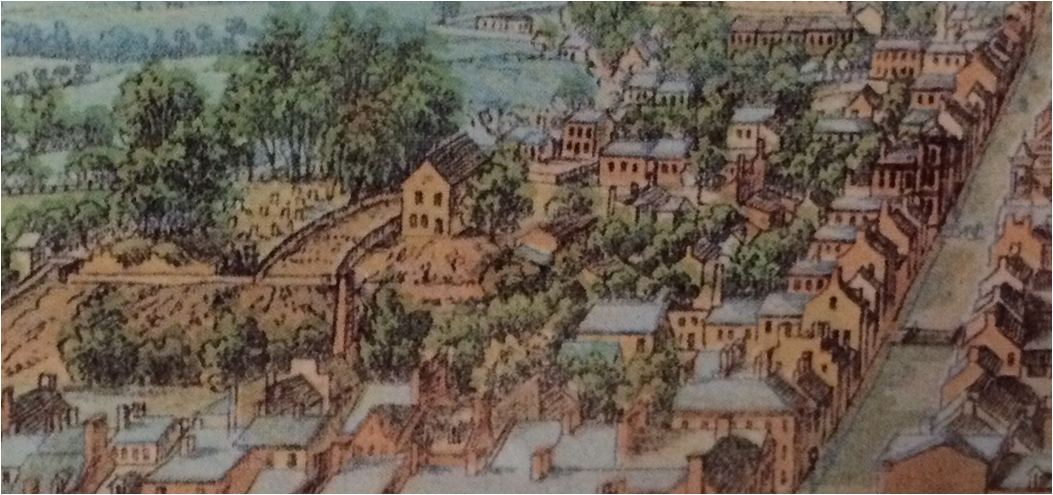



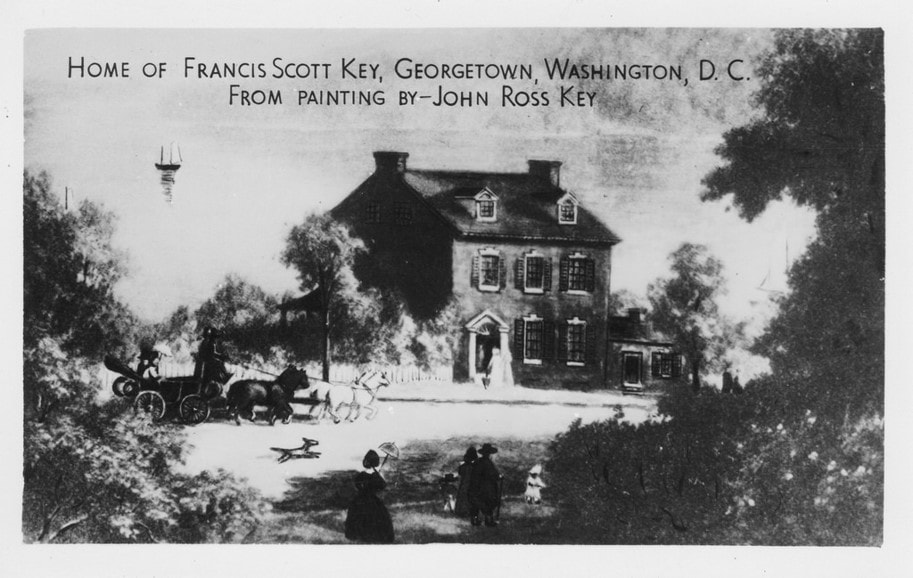










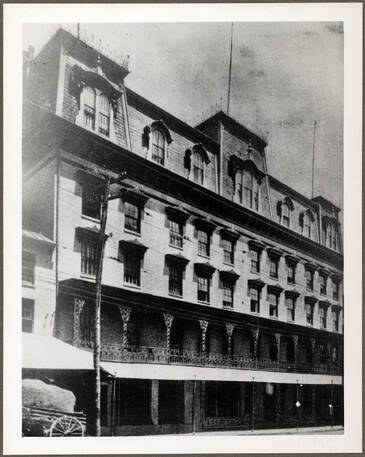




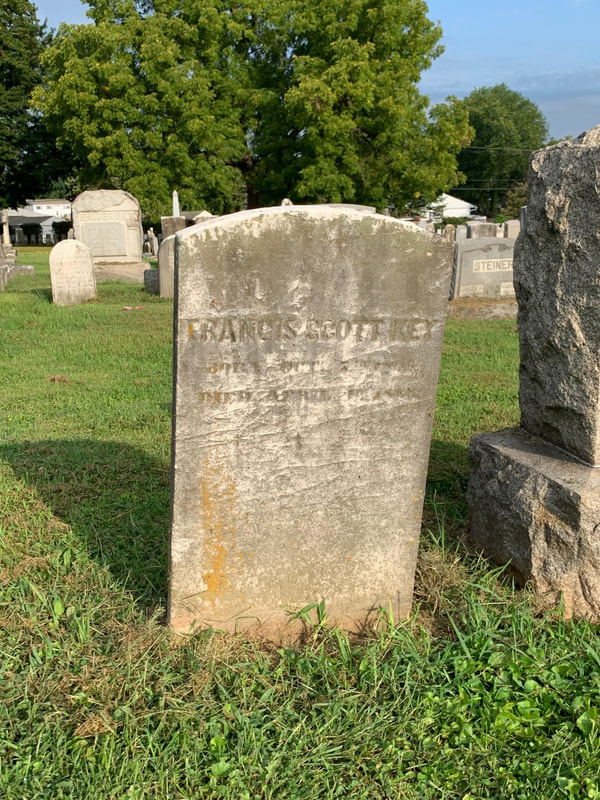

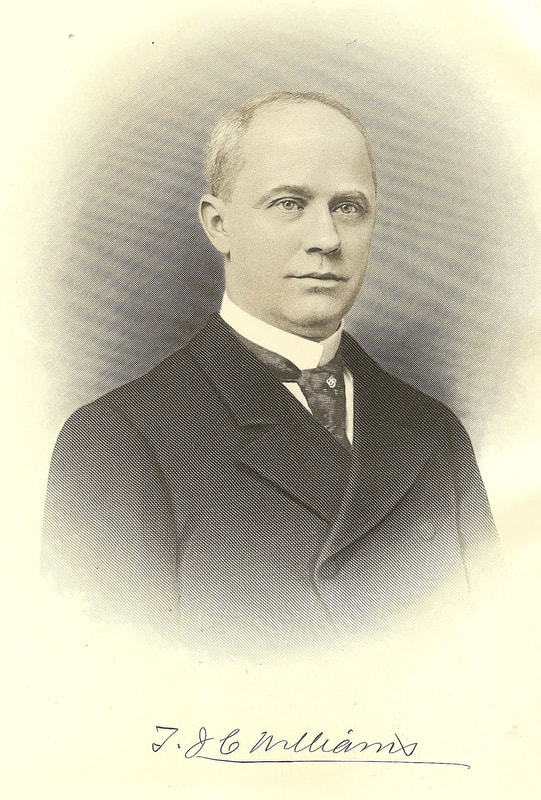













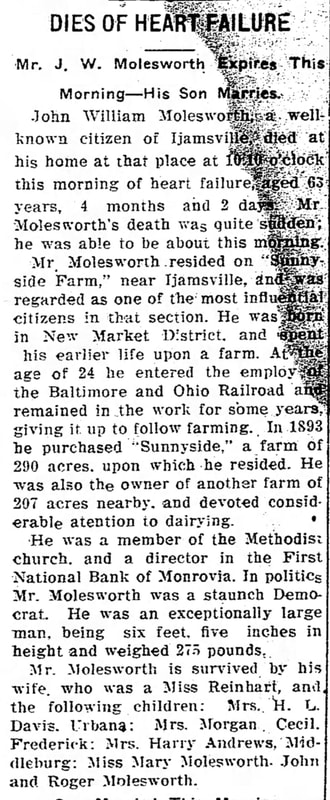










 RSS Feed
RSS Feed